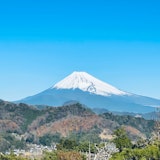The traditional townscape is a harmonious blend of travel basket buildings from the Edo period and sericulture buildings built during the Meiji era when sericulture was popular. The irrigation water streams in the center of the road and the beautiful houses with lattice doors lining both sides of the road give you a quiet appearance reminiscent of a historical hometown.
Details:
The Unno Yado was opened in 1625 as a inn station in Kitakuni Highway. The Kitakuni Highway is an important highway connecting the Nakasendo and Hokuriku Highways, and in addition to transporting gold mined in Sado and changing the attendance of various feudal lords in Hokuriku, there was frequent traffic to and from Edo, and many visitors visited Zenkoji Temple.
Since the beginning of the Meiji era, sericulture has become popular. The characteristics of the building from that time still remain today.
Since the traditional houses have been preserved to the present, it was selected as one of the "100 Best Roads in Japan" in Showa 61 Showa 61 and as an "Important Preservation District for Groups of Traditional Buildings" in 1987 Showa 62.
Show original text

![[Image1]The traditional townscape is a harmonious blend of travel basket buildings from the Edo period and s](https://img-cooljapan.imgix.net/member_posts/image/c8ac879706b0eb99f3e82fcf1f72a3845b88ff5a.jpg?w=1000&h=750&fit=min&auto=format&q=70)


